Birdfinding.info ⇒ The Nihoa Finch has been denominated as critically endangered due to the minuscule size of its natural range, but it remains common there, on 170-acre Nihoa Island. This mid-oceanic island is remote and challenging for boat landings, and rarely receive human visitors except government employees on biological research expeditions.
Nihoa Finch
Telespiza ultima
Endemic to Nihoa Island in the Northwest Chain of Hawaii.
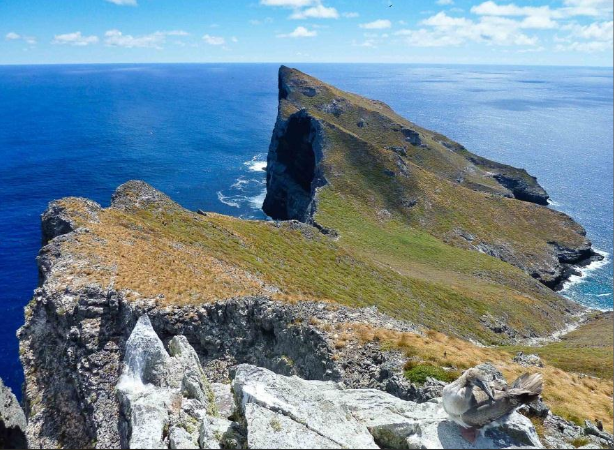
Nihoa Island, the view from Miller Peak. © Eric VanderWerf
In 1967 a small population was translocated to French Frigate Shoals as a measure to help ensure the species’ survival. Despite some breeding, it dwindled from 42 to zero sometime between 1974 and 1984. A limited captive breeding program in the 1970s indicated that such propagation is feasible, and another translocation attempt has been contemplated.
The global population has been estimated through occasional surveys of Nihoa, and most estimates have been approximately 3,000. (Survey data from 1979 to 2011 indicate a low estimate of 1,000 in 1987 and a high of 4,800 in 2007.) IUCN lists the species as “Critically Endangered” because of its natural vulnerability to catastrophic events, not because of an observed population decline.
Identification
A medium-sized, heavy-billed finch, slightly smaller and proportionately smaller-billed than the closely related Laysan Finch.
Male has mostly golden-yellow head and breast, and otherwise gray with yellow highlights on the wings, back, and tail.
Female is gray-brown, locally suffused with yellow, and finely streaked blackish on the head, upperparts, breast, and flanks.
Immatures resemble females, but have thicker streaks that are more sparsely distributed.
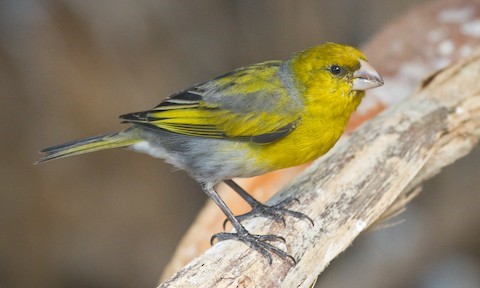
Nihoa Finch, male. (Nihoa, Hawaii; September 8, 2011.) © Eric VanderWerf

Nihoa Finch, male. (Nihoa, Hawaii; October 2, 2010.) © Robby Kohley
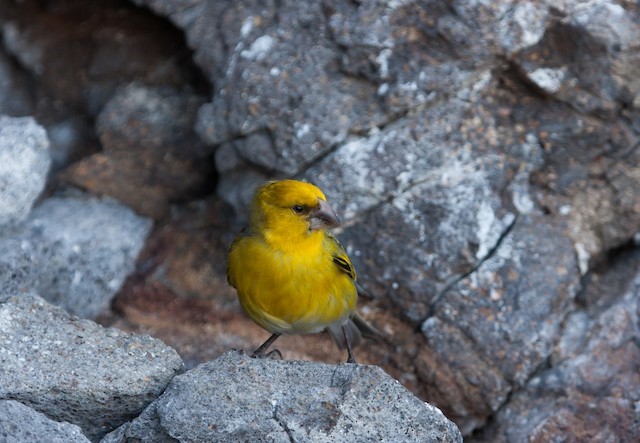
Nihoa Finch, male. (Nihoa, Hawaii; October 2, 2010.) © Robby Kohley

Nihoa Finch, female. (Nihoa, Hawaii; January 19, 2008.) © Jack Jeffrey
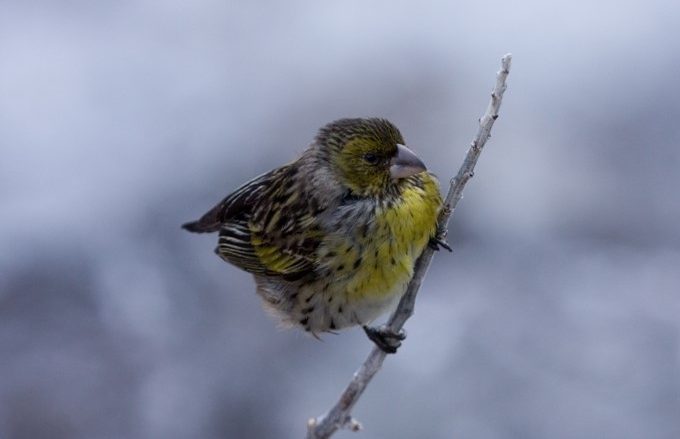
Nihoa Finch, female. (Nihoa, Hawaii.) © Robby Kohley
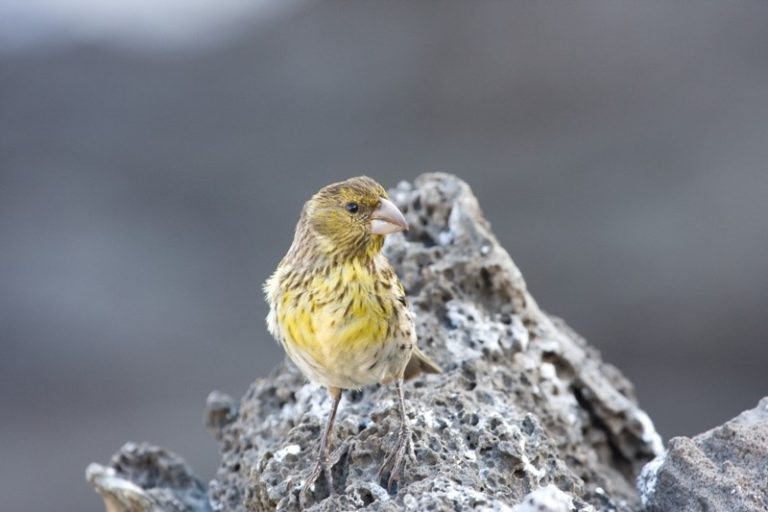
Nihoa Finch, female. (Nihoa, Hawaii.) © Robby Kohley
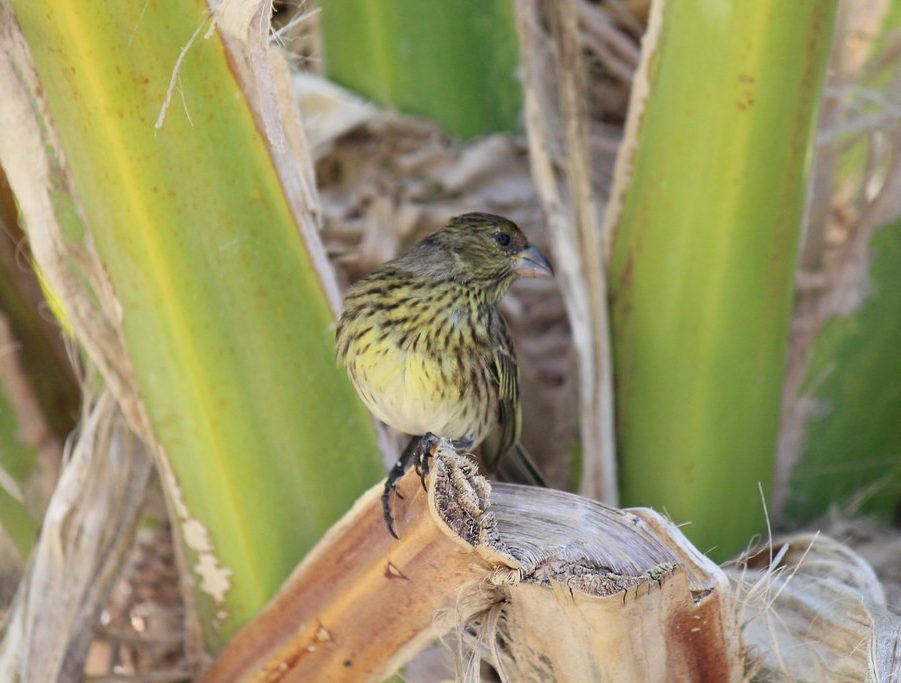
Nihoa Finch, female. (Nihoa, Hawaii; June 8, 2015.) © Tim Kroessig
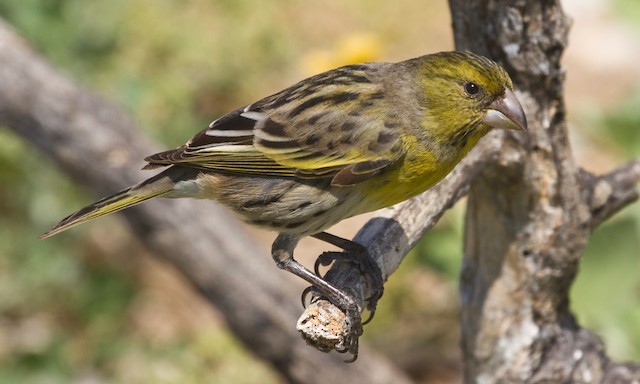
Nihoa Finch, immature male. (Nihoa, Hawaii; September 8, 2011.) © Eric VanderWerf
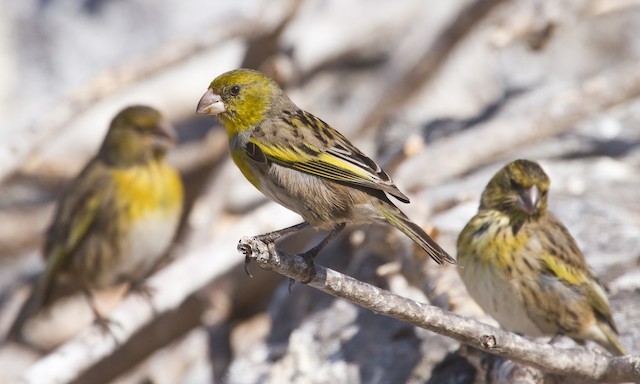
Nihoa Finch, immature males and female (at right). (Nihoa, Hawaii; September 8, 2011.) © Eric VanderWerf
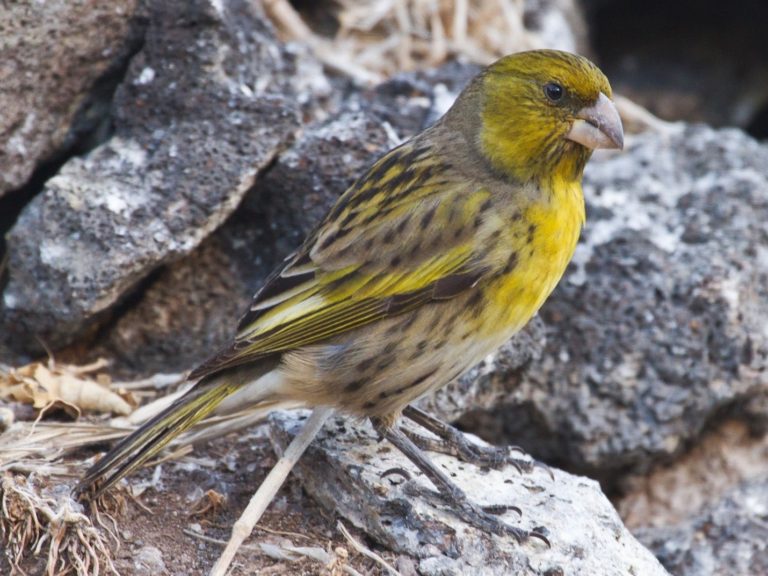
Nihoa Finch, immature male. (Nihoa, Hawaii; September 8, 2011.) © Eric VanderWerf

Nihoa Finch, female. (Nihoa, Hawaii; June 5, 2015.) © Tim Kroessig

Nihoa Finch, female. (Nihoa, Hawaii.) © Robby Kohley

Nihoa Finch, immature. (Nihoa, Hawaii; August 22, 2016.) © Robby Kohley
Voice. Song is reportedly “loud, melodious, and complex, with a variety of whistled notes.” (Pratt 2005)
Notes
Monotypic species.
IUCN Red List Status: Critically Endangered.
References
BirdLife International. 2018. Telespiza ultima. The IUCN Red List of Threatened Species 2018: e.T22720722A130854185. https://dx.doi.org/10.2305/IUCN.UK.2018-2.RLTS.T22720722A130854185.en. (Accessed June 1, 2020.)
eBird. 2020. eBird: An online database of bird distribution and abundance. Cornell Lab of Ornithology, Ithaca, N.Y. http://www.ebird.org. (Accessed June 1, 2020.)
Pratt, H.D. 2005. The Hawaiian Honeycreepers: Drepanidinae. Oxford University Press.
Pratt, H.D., and C.J. Sharpe. 2020. Nihoa Finch (Telespiza ultima). In Handbook of the Birds of the World Alive (J. del Hoyo, A. Elliott, J. Sargatal, D.A. Christie, and E. de Juana, eds.). Lynx Edicions, Barcelona. https://www.hbw.com/node/61434. (Accessed May 9, 2020.)
Pyle, R.L., and P. Pyle. 2017. The Birds of the Hawaiian Islands: Occurrence, History, Distribution, and Status. Version 2 (January 1, 2017). http://hbs.bishopmuseum.org/birds/rlp-monograph/. B.P. Bishop Museum, Honolulu, Hawaii.
VanderWerf, E.A., D.H. Tsukayama, F.A. Amidon, and W. Aldeguer. 2011. Nihoa Island biological monitoringand management, 2-16 September 2011.Unpublished report to the U.S. Fish and Wildlife Service. https://www.fws.gov/pacificislands/documents/Conservation%20and%20Restoration%20program/Nihoa%20reports/NIHOA_ISLAND_TRIP_REPORT_2011_FINAL.pdf.
